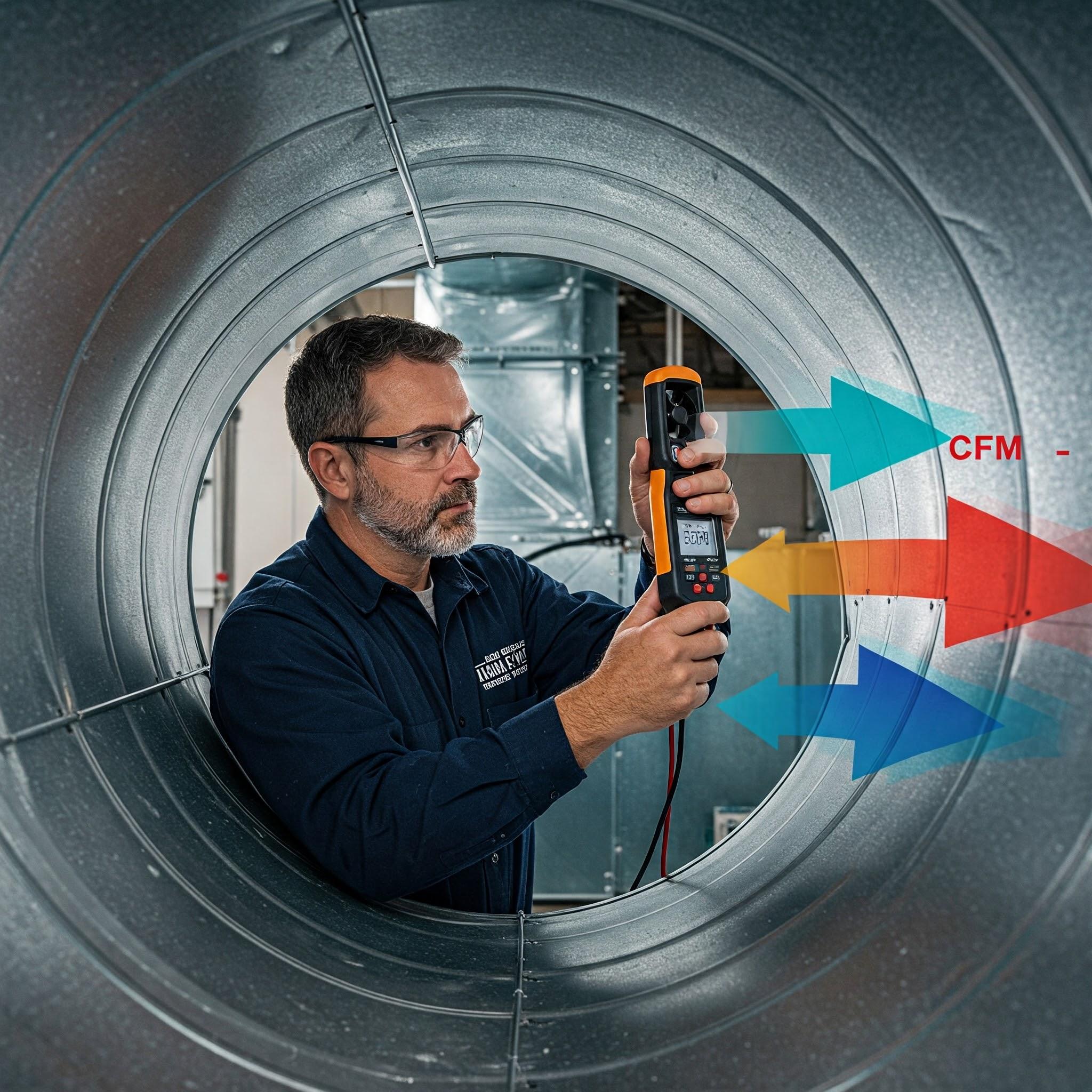What is CFM in HVAC? Understanding Cubic Feet per Minute

In HVAC (Heating, Ventilation, and Air Conditioning) systems, the term CFM, or Cubic Feet per Minute, is frequently used to measure airflow. It represents the volume of air moved through a system in one minute and is a fundamental parameter in designing and operating efficient HVAC systems.
Definition and Importance of CFM
CFM is used to quantify how much air is delivered or removed by the HVAC system over time. Specifically, it helps in determining the airflow requirements for components such as air handling units (AHUs), fan coil units (FCUs), and ductwork. Moreover, it is a key factor in maintaining proper ventilation and indoor air quality.
How is CFM Calculated?
CFM is calculated using the following formula:
CFM = Air Velocity (FPM) × Duct Cross-sectional Area (ft²)
- Air Velocity (FPM): The speed of air flowing through the duct, measured in feet per minute.
- Duct Area (ft²): The cross-sectional area of the duct through which the air moves.
Example:
If air is moving at 800 feet per minute and the duct has a cross-sectional area of 4 square feet:
CFM = 800 × 4 = 3200 CFM
This means 3,200 cubic feet of air are flowing through the duct every minute.
Role of CFM in HVAC Systems
Proper understanding and control of CFM have several benefits:
First, it ensures even temperature distribution across all zones.
Second, it allows the system to operate at peak efficiency, reducing energy consumption.
Third, it assists in selecting the correct size for fans, blowers, and ducts.
Lastly, it promotes better indoor air quality by maintaining proper ventilation.
As a result, consistent airflow enhances both the performance and reliability of HVAC systems.
Best Practices for Managing CFM
To maintain optimal airflow levels, consider the following best practices:
Regularly monitor the airflow throughout the system.
Additionally, balance air distribution using dampers or VCDs.
Furthermore, clean the ductwork and replace filters to avoid blockages.
Also, design duct layouts with minimal resistance to ensure smooth airflow.
By following these steps, system performance and energy efficiency can be significantly improved.
Conclusion
CFM is a critical measurement in HVAC systems, directly affecting performance, energy usage, and indoor comfort. Accurate calculation and monitoring of CFM help ensure that HVAC systems operate effectively and meet the requirements of the space they serve. Understanding this concept is essential for HVAC professionals involved in system design, installation, and maintenance.



